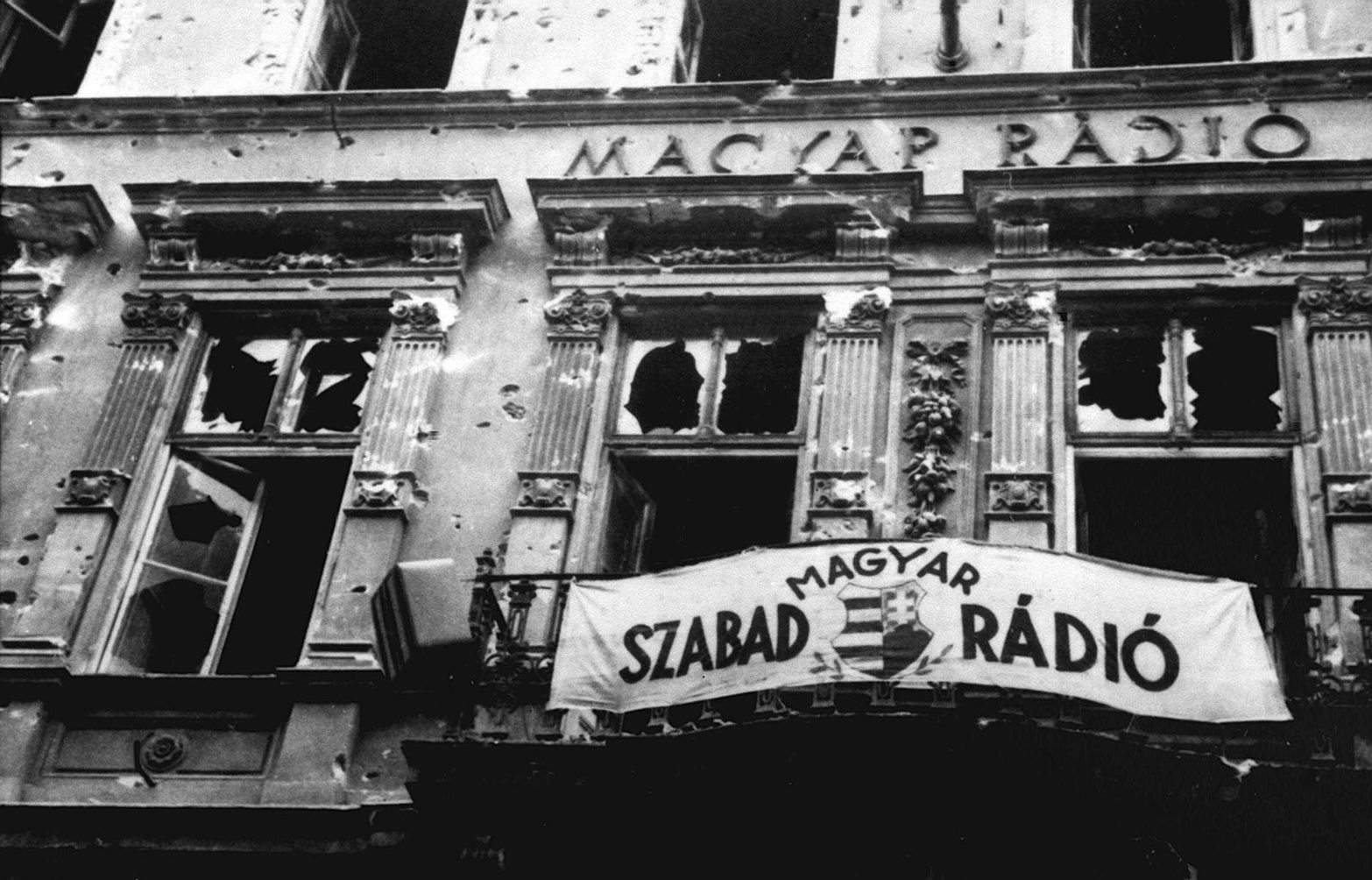The first days of the revolution – Hungarian Radioc
Fact of the Hungarian figure „Josef Bem Square – 1956″
Part of the „Dreaming about the democracy” topic
The fall of 1956 was marked by growing anti-Stalinist sentiment in Hungary. Reform movements gained momentum in September when the Writers’ Association elected a reformist leadership, and on October 6, the reburial of László Rajk, a former Minister of the Interior who had been executed in a show trial, symbolized a break from the brutal policies of the past. University students also reconstituted their independent self-governing body, the MEFESZ, which became central to the growing demand for political change. The reformers, along with the students, called for Imre Nagy, the marginalized former prime minister, to be reinstated in the government.
On October 23, 1956, university students organized a demonstration for reform in Budapest, and their calls for change quickly resonated with the broader population. Tens of thousands of students were joined by workers and passersby, and by evening, approximately 200,000 people had gathered in front of the Parliament to hear Imre Nagy speak. As the protests intensified, one group of demonstrators toppled the statue of Stalin, symbolizing their rejection of Soviet domination. Another group marched to the Hungarian Radio building, seeking to have their demands broadcast to the nation.
At the Hungarian Radio, tensions reached a boiling point. The protesters’ request to air their demands was denied, and the state security forces (ÁVH) guarding the building opened fire on the unarmed crowd, leading to the first violent confrontation of the revolution. The ensuing gunfight lasted through the night, ending in victory for the insurgents by the morning of October 24. This event marked the beginning of a full-scale revolution. Armed insurgent groups began to form across Budapest and other parts of Hungary, as the initial call for reforms transformed into an armed struggle for freedom from Soviet control.
The events at the Hungarian Radio building were pivotal in escalating the revolution. What began as a peaceful demonstration for reform quickly turned into a violent uprising against the regime. The radio station, a key symbol of state propaganda, became a flashpoint where the communist government’s unwillingness to engage with the protesters’ demands was starkly displayed. The brutality of the state’s response only galvanized the revolution, with citizens taking up arms to fight for their independence and political freedom.
The role of Hungarian Radio during the first days of the revolution was not isolated; it resonated with similar events across Central Europe, where growing discontent with Soviet-backed regimes was becoming more visible. Like the protests in Poland earlier that year, the Hungarian uprising reflected a broader movement for sovereignty and democracy in the Eastern Bloc. Though the revolution would ultimately be crushed by Soviet intervention, the early days of the uprising, including the events at the Radio, left an indelible mark on Hungary’s national memory and its long struggle for freedom.





